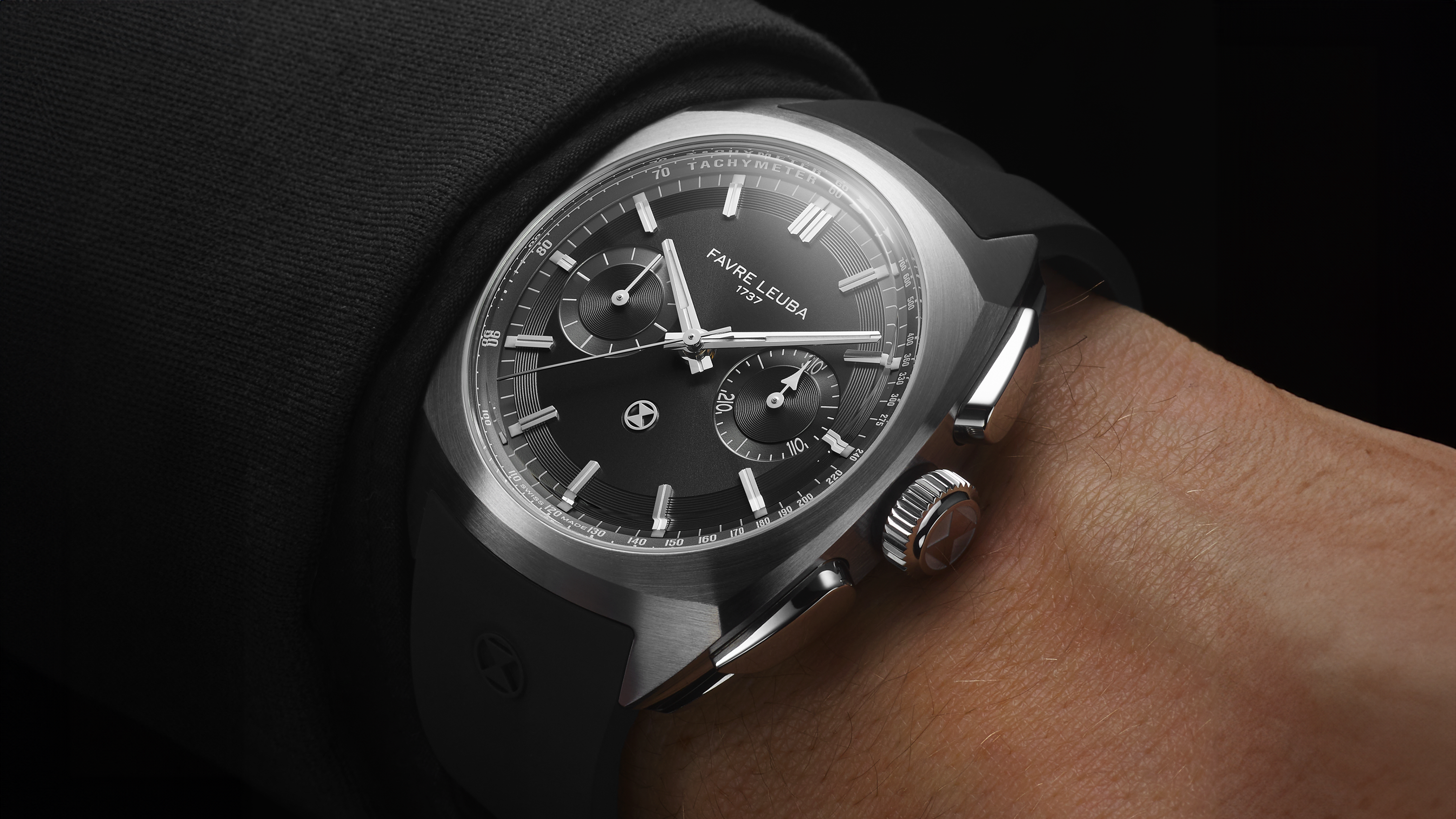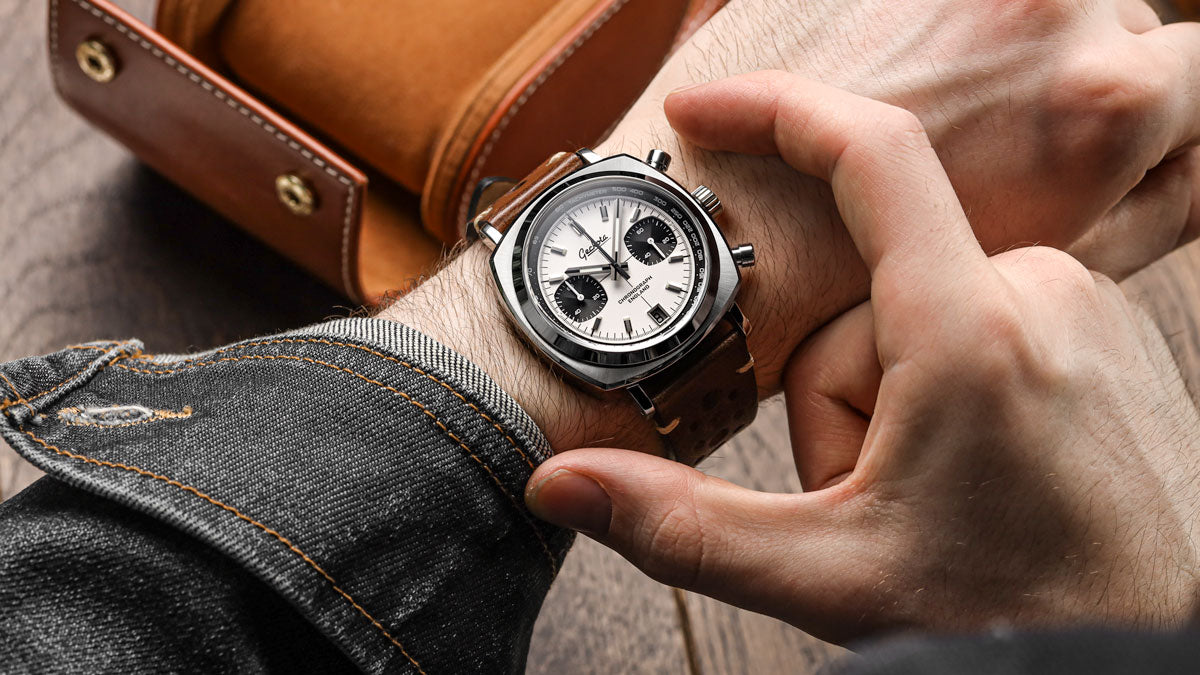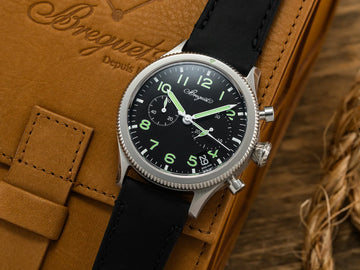Behind the back of a mechanical chronograph, you'll find a beautiful and complex system of wheels and levers. This intricate engine is what makes a chronograph stopwatch function. When you push a button to start, stop, or reset the hand, you are activating a highly specific mechanism. In mechanical chronographs, there are two main types of systems that control this action: the column wheel and the cam.
For many years, the column wheel was seen as the mark of a high end watch, while the cam system was thought of as a cheaper alternative. The truth is more complicated.
What a Chronograph Really Is

A chronograph is a watch that has a built-in stopwatch function. It's used to measure and record a specific period of time, separate from the regular timekeeping. The word itself comes from the Greek words "chronos" (time) and "graphos" (writing), because it was originally used to "write" or record time.
How Do You Use a Chronograph?
A chronograph is easy to use. The watch has two extra buttons, called pushers, on the side of the case.
-
The top pusher (usually at 2 o'clock): This is your start/stop button. You press it once to begin timing and press it again to stop.
-
The bottom pusher (usually at 4 o'clock): This is your reset button. After you've stopped the timer, you press this button to instantly send the hands back to zero.
A chronograph will also have extra small dials, called sub-dials, on the main face. These dials count the minutes and hours that have passed. The main sweeping second hand on the watch only moves when the stopwatch is active.
Why Do We Have Chronographs?
The first chronographs were made for very specific purposes. They were used to time horse races, scientific experiments, and even artillery fire. They became especially important in racing and aviation. Pilots and drivers relied on them to time laps, measure speeds, and calculate fuel consumption. While most of us don't need to time a lap today, the chronograph remains one of the most popular and useful features a watch can have.
The Column Wheel Chronograph

The column wheel is a small, fluted pillar located inside a watch movement. It looks a little like the top of a chess rook. Several tiny levers that control the start, stop, and reset functions rest against this column.
When you push the start button, a lever moves and rotates the column wheel by one click. The columns on the wheel then push certain levers up or let them drop down into the gaps between the columns. This action smoothly engages the chronograph's gears and starts the second hand moving. When you push the stop button, the column wheel turns again, disengaging the gears and stopping the hand. Pushing the reset button turns the wheel one more time and a lever strikes a special heart shaped part that snaps the second hand back to zero.
Because of its design, the column wheel provides a very smooth feel when you push the buttons. This elegance and precision, along with the detailed craftsmanship required to make one, has made it a favorite of high end watchmakers. You can find these movements in watches like the Zenith El Primero and the Rolex Caliber 4130, but also in more affordable options like the Seagull ST19.
The Cam Chronograph

The cam system is a simpler, more robust way to control a chronograph's functions. It uses an eccentric cam and a series of levers to start and stop the action. This system was developed to make chronographs more affordable and easier to produce in large numbers.
The Valjoux 7750 is one of the most common cam systems in watchmaking today. It is widely used in watches at many different price points. When you push the start button on a cam chronograph, a lever with a tiny gear swings into place and meshes with the chronograph wheel, making the second hand begin to move.
Cam systems sometimes get a bad reputation for two reasons: a slightly harder feel when pushing the buttons and a second hand that can sometimes jump a little when it starts. While the buttons on a cam watch may feel a little stiffer than on a column wheel watch, the jumping hand is usually caused by something else: the clutch.
Horizontal vs. Vertical Clutches
The clutch is what connects and disconnects the chronograph mechanism from the main movement. There are two main types: horizontal and vertical.
A horizontal clutch uses two gear wheels with teeth that need to mesh together. When you push the start button, these two gears may clash for a split second before they engage. This can cause the second hand to jump slightly.
A vertical clutch works differently. The gears are always meshed, and the clutch simply brings the two parts together smoothly. This design prevents any jumping of the second hand and reduces wear on the gears. Because a vertical clutch is more complex to make, you will usually find it in higher end watches. This is one of the reasons people often think a column wheel movement is better, as the two are often found together.
Which is Better?

The debate over which system is superior is a friendly argument among watch lovers. The column wheel is often praised for its smooth feel and elegant design, representing the highest level of traditional watchmaking. The cam system is valued for its reliability, robustness, and affordability, which made chronographs available to everyone.
Both systems have proven their worth. The Lemania 5100 cam chronograph, with its reputation for toughness, was even approved for use by some armed forces. In the end, there is no single answer. The best system depends on what you value: traditional craftsmanship or rugged reliability.
Discover the Argos Olympus
The Argos Olympus is a great example of a watch with a story. It has a movement built for performance, showing that smart engineering can be both reliable and elegant. If you appreciate the craftsmanship behind a watch, you will love the Argos Olympus. It is a true daily driver you can wear every day.

